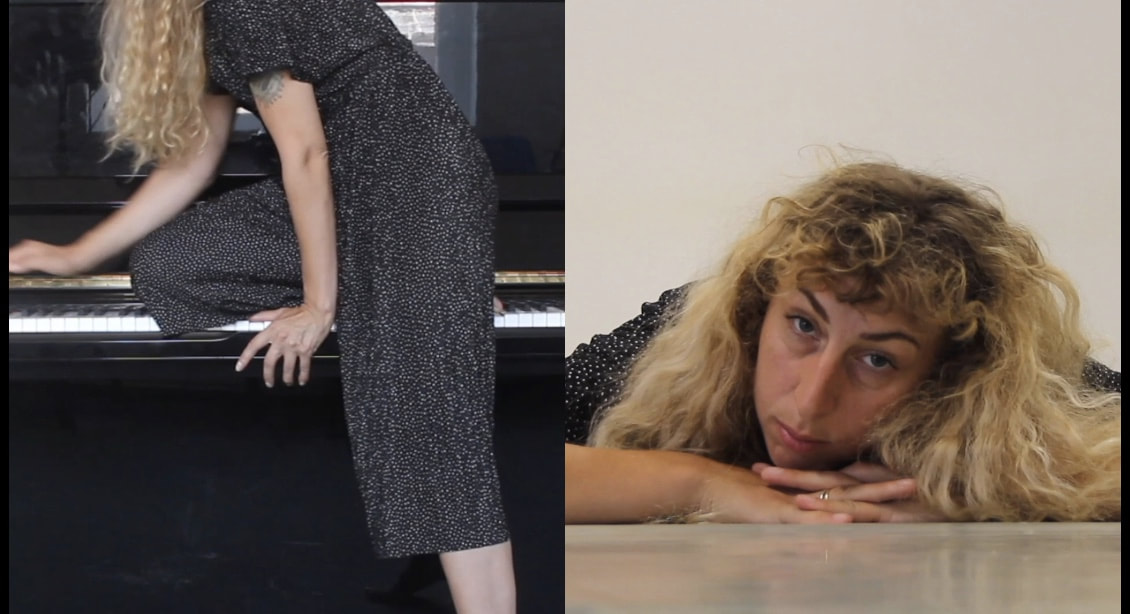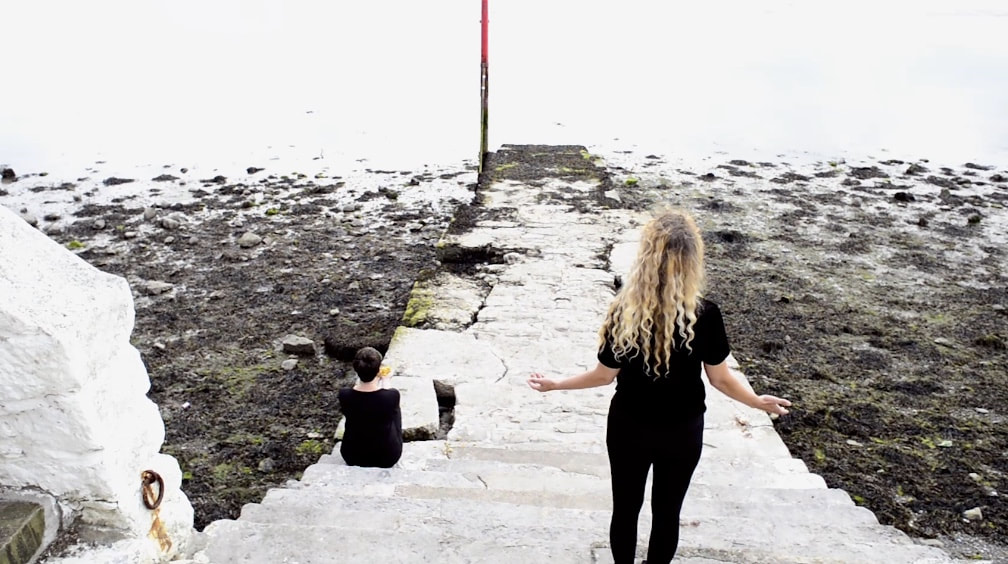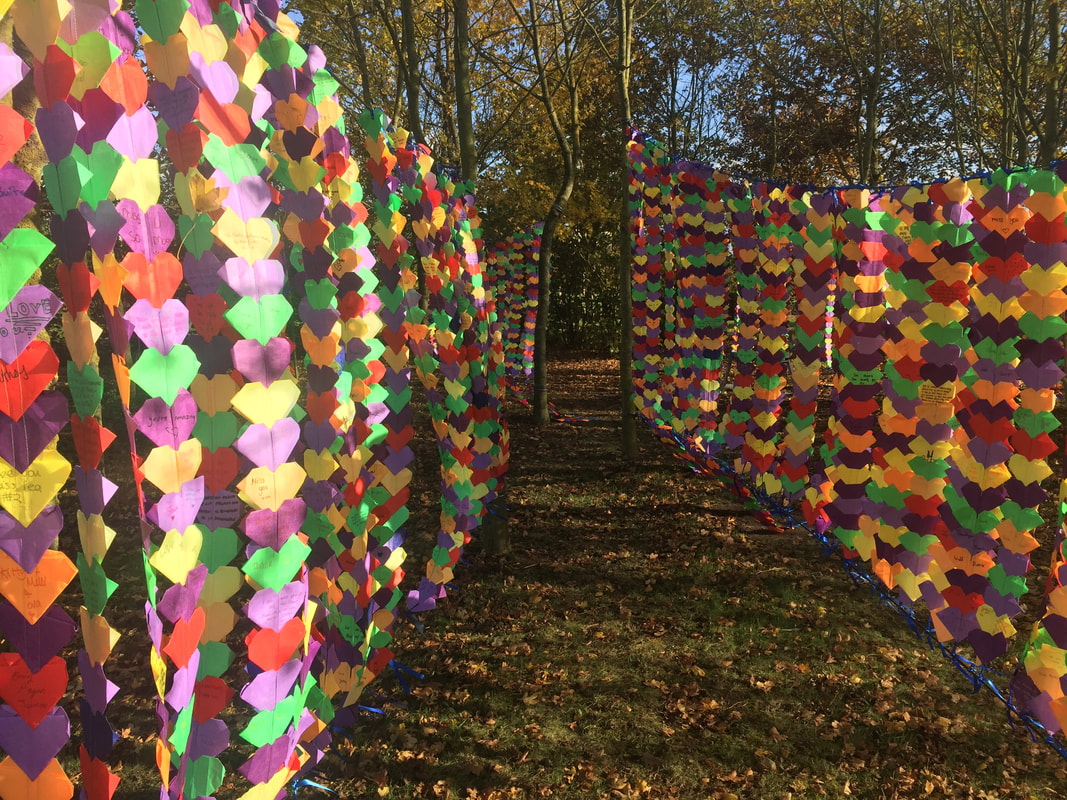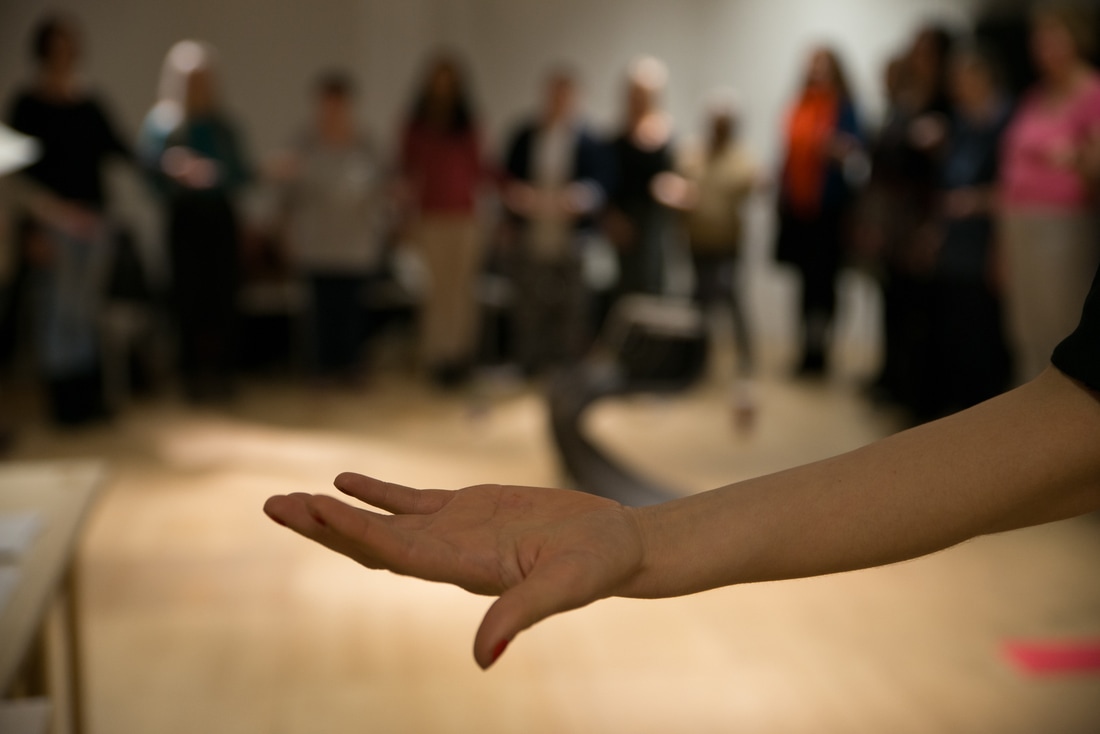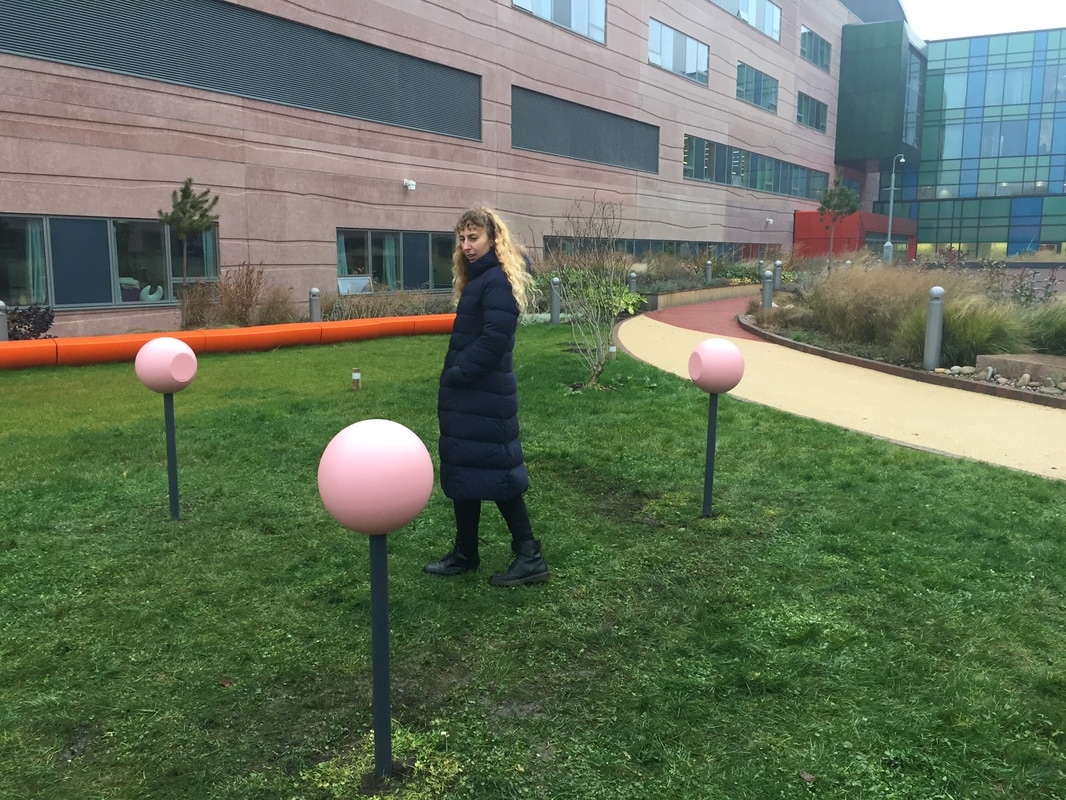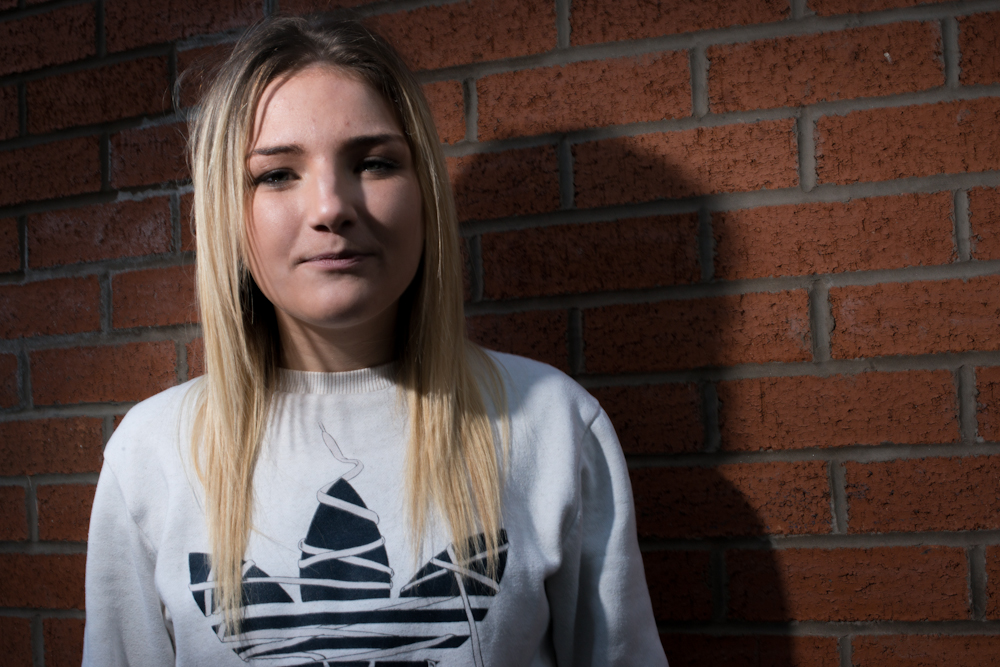Piano Work to a Family Conversation
Installation, Modern Art Oxford, 2019
Piano Work to a Family Conversation is a sound piece and multi sensory installation which explores the power of listening in developing our relationship with our own and others' cultural identity. This work was produced by recording a candid family conversation about the relationships to an absent aspect of cultural identity. The recording was then used as am improvisational provocation, using embodied piano work to add layers of meaning and to create a connection between the timelessness of the diasporic experience, and the present moment.
“Najia Bagi’s recent contribution to the University of Oxford’s Art of Noises event was a tremendous success. We asked Najia to respond in some way to Akram Zaatari’s exhibition at Modern Art Oxford. The intimate dialogue she presented between her family members coupled with a multi-sensory installation served to invite the audience to question their own relationship with race, gender and spirituality in the digital age. Thank you Najia.”
Daniel Hulme, University of Oxford
Daniel Hulme, University of Oxford
Dialogues
MMUS final creative project, Goldsmiths, University of London, 2018
Distinction
Those rigid mountains
Behind me
Snow peaked and high
And the hollowed path
I scraped my knee on
This afternoon
Red clay earth
Forgiving to my weight
Dirty feet sinking in
Did I fall
Or did the below come up
To meet me?
What aspects of ourselves do we mould into and recover in memory, through interaction with others, or in nostalgia, as well as through our interactions with objects, in our mastery of things or situations? How do the changes in the world around us, past present and future, weave into the way we see ourselves?
This project explored how listening and dialogue can provide an insight into our sense of self, defining identity as a multi-layered concept which can be found or recognised through practices of improvisation, embodied movement and sounding and auto-ethnography.
An embodied connection with the self can create alternative temporalities through which mindful, embodied experience can highlight our identities as body and voice, object and relational entity, rather than an idea to be found in memory and past events, actions or achievements connected to external value systems.
Each of the practices explored during Dialogues uses dialogue as a tool to explore the self in relation to ourselves, to another, to object and space and to our cultural heritage. This finding through dialogue happened through improvised embodied piano work, in a collaboration with choreographer Rosamond Martin, and finally through conversations with my sisters about our identities as British women with a mixed cultural heritage, and subsequent improvisations in response to these recordings.
Through this work, identity becomes permeable, to be discovered and developed through practice. Within these practices, identity manifests itself as ghosts and physical sensations, memories and the present moment, it exists in response to another person or object; it is all of these things at the same moment.
Behind me
Snow peaked and high
And the hollowed path
I scraped my knee on
This afternoon
Red clay earth
Forgiving to my weight
Dirty feet sinking in
Did I fall
Or did the below come up
To meet me?
What aspects of ourselves do we mould into and recover in memory, through interaction with others, or in nostalgia, as well as through our interactions with objects, in our mastery of things or situations? How do the changes in the world around us, past present and future, weave into the way we see ourselves?
This project explored how listening and dialogue can provide an insight into our sense of self, defining identity as a multi-layered concept which can be found or recognised through practices of improvisation, embodied movement and sounding and auto-ethnography.
An embodied connection with the self can create alternative temporalities through which mindful, embodied experience can highlight our identities as body and voice, object and relational entity, rather than an idea to be found in memory and past events, actions or achievements connected to external value systems.
Each of the practices explored during Dialogues uses dialogue as a tool to explore the self in relation to ourselves, to another, to object and space and to our cultural heritage. This finding through dialogue happened through improvised embodied piano work, in a collaboration with choreographer Rosamond Martin, and finally through conversations with my sisters about our identities as British women with a mixed cultural heritage, and subsequent improvisations in response to these recordings.
Through this work, identity becomes permeable, to be discovered and developed through practice. Within these practices, identity manifests itself as ghosts and physical sensations, memories and the present moment, it exists in response to another person or object; it is all of these things at the same moment.
I have known Najia since 2017, when I became her major project tutor during her MMus Creative Practice here at Goldsmiths, University of London. I was delighted with how her artistic practice developed during that time, exploring her cultural identity through her improvisatory practice. I have since invited her to give a talk about her project to current master students and I continue to support her work.
Iris Garrelfs, Co-Head Sound Practice Research Group (SPR), MMus Sonic Arts Pathway leader, Goldsmiths College
Iris Garrelfs, Co-Head Sound Practice Research Group (SPR), MMus Sonic Arts Pathway leader, Goldsmiths College
Porth Galar / Gate of Grief
I'r Môr / To the Sea, 2018
“… the air that is breathed is not neutral or lifeless, for it has its life in sound and voice. Its sound ranges from the barely or not-at-all noticed background of our own breathing to the noises of the world and the singing word and song among humans. The silence of the invisible comes to life in sound.” (Don Ihde, Listening and Voice: Phenomenologies of Sound, 1976)
Commissioned by I'r Môr contemporary art festival, in Spring 2018, Porth Galar / Gate of Grief is a sound and visual installation and a performance. The piece explores movement, passing of precious material, walking and following, facing the wide expanse of sea and time, tides, and singing to allow the loss and return, to the self and to others.
The voice has a special power to add noise to the inhale and the exhale, to the tides of our bodies and the ebbs and flows of our lives. The voice allows us to hear each other, and share in our experiences. By collecting together, we call to the sea and give recognition to the power of a body of voices to communicate our individual and shared experience. We also recognise the power that collective action and collective articulation of our thoughts and feelings, has to bring us together and transform the situations around us.
This piece is a promenade performance, and semi permanent installation of composition and precious objects, both of which appear and disappear during the course of the installation.
The voice has a special power to add noise to the inhale and the exhale, to the tides of our bodies and the ebbs and flows of our lives. The voice allows us to hear each other, and share in our experiences. By collecting together, we call to the sea and give recognition to the power of a body of voices to communicate our individual and shared experience. We also recognise the power that collective action and collective articulation of our thoughts and feelings, has to bring us together and transform the situations around us.
This piece is a promenade performance, and semi permanent installation of composition and precious objects, both of which appear and disappear during the course of the installation.
I loved the piece. It was definitely the most subtle in the exhibition - voices and sounds coming and going, materials appearing and disappearing, exactly like the tide. And always different every time I walked past. The sounds carried across the bay, which had an eerie but mesmerising impact.
Manon Awst, Curator, Ir Môr
Manon Awst, Curator, Ir Môr
Heartfelt Messages
The National Memorial Arboretum, 2017
Commissioned by the National Memorial Arboretum, this six month participatory arts project was delivered with visual artist Nicola Colclough, inspired by the communication sent to and from the front line during World War One and was part of the UK Battle of Passchendaele centenary commemorations.
The project explores our connection with the present, and our appreciation of one another, both of which were themes within letters sent between the front line and the home front during World War One.
Participants in the project wrote "heartfelt messages" of love, memory, pride and hope and folded them inside an origami heart, and these formed a large scale outdoor installation which slowly built up during summer and autumn 2017.
The folding of the origami heart was accessible and also meaningful; it is a mindful act which brings us into the present, and when done together it is an aid to conversation and connection. It is also reminiscent of projects such as the Thousand Paper Cranes in Hiroshima.
At the end of the project 25,000 origami hearts and three sound pieces were presented in the War Widow’s Wood at the NMA. The installation took audiences through the beginning, middle and end; of the war, of letters and of our lives. The sights and sounds of the installation were mournful, hopeful, personal and moving.
The project included inspiration from archives from the Museum of Passchendaele and included both music from the early 1900s and contemporary music, as well as spoken word and found sounds.
The project explores our connection with the present, and our appreciation of one another, both of which were themes within letters sent between the front line and the home front during World War One.
Participants in the project wrote "heartfelt messages" of love, memory, pride and hope and folded them inside an origami heart, and these formed a large scale outdoor installation which slowly built up during summer and autumn 2017.
The folding of the origami heart was accessible and also meaningful; it is a mindful act which brings us into the present, and when done together it is an aid to conversation and connection. It is also reminiscent of projects such as the Thousand Paper Cranes in Hiroshima.
At the end of the project 25,000 origami hearts and three sound pieces were presented in the War Widow’s Wood at the NMA. The installation took audiences through the beginning, middle and end; of the war, of letters and of our lives. The sights and sounds of the installation were mournful, hopeful, personal and moving.
The project included inspiration from archives from the Museum of Passchendaele and included both music from the early 1900s and contemporary music, as well as spoken word and found sounds.
Move Me
Arts Council England's Grants for the Arts funded project, 2016-2017
Who are we when we are looking for love? What is missing? How do we see ourselves, and what are the stories we tell ourselves and others during this transitional phase of our lives?
Move Me started when Najia spoke to three people who were single and, in their own words, looking for love. They all agreed that it would be interesting to explore this transition through letter writing, and agreed to send Najia a letter every week for as long as it seemed appropriate, or until the transition subsided or shifted.
This process continued from September 2016 - February 2017 at which point Najia decided to make a performance inspired by the stories inside these beautiful letters. The fact that the letters highlighted that we all experience transitions in different but universal ways lent itself to working with the collective voice, so Najia chose to work with a choir. The way Najia felt that she moved along this journey with the people who were writing to her inspired her to work with Sal Maguire, a dancer and choreographer. Finally, the singularity of experience of the letter writers and the aim to make the performance even more immersive for the audience inspired Najia to work with light artist Elisa Artesero.
The performance installation happened at HOME, Manchester on 3rd March. The aim of the performance was to invite the audience to share and experience the journeys that Najia witnessed and felt part of during the project. A live letter reading performance and participatory installation was created at Central Library Manchester in April 2017. This gave the public the chance to reply to the letters.
Move Me started when Najia spoke to three people who were single and, in their own words, looking for love. They all agreed that it would be interesting to explore this transition through letter writing, and agreed to send Najia a letter every week for as long as it seemed appropriate, or until the transition subsided or shifted.
This process continued from September 2016 - February 2017 at which point Najia decided to make a performance inspired by the stories inside these beautiful letters. The fact that the letters highlighted that we all experience transitions in different but universal ways lent itself to working with the collective voice, so Najia chose to work with a choir. The way Najia felt that she moved along this journey with the people who were writing to her inspired her to work with Sal Maguire, a dancer and choreographer. Finally, the singularity of experience of the letter writers and the aim to make the performance even more immersive for the audience inspired Najia to work with light artist Elisa Artesero.
The performance installation happened at HOME, Manchester on 3rd March. The aim of the performance was to invite the audience to share and experience the journeys that Najia witnessed and felt part of during the project. A live letter reading performance and participatory installation was created at Central Library Manchester in April 2017. This gave the public the chance to reply to the letters.
LISTEN to the soundscape from the performance installation here:
What Would Billie Do?
HOME Projects commission, 2016
A project with HOME in Manchester to explore loss of Self through Love.
Who are we during a break up? How much do we lose and gain for those we love? How does that process change us?
Najia began this project by performing at HOME and asking the audience to simultaneously share their Love stories. An exchange. A comfort.
The project then developed to offer and accept more sharing and comfort through connection with Love and Loss, heartbreak and gain. Najia installed "prescriptive" music players inside HOME, inviting people to connect with emotions connected to Love and Loss through listening to melodramatic songs, all by Billie Holiday.
Najia held a Heartbreak Amnesty in February 2016, collecting unwanted objects from past relationships. During this happening, she collected a beautiful Lego love heart (pictured above) which became the emblem of the project.
On 20 May 2016 Najia wrote and sang three pieces written for 3 female voices (and no instrumentation) at HOME. These stories were influenced by the shared words and objects explored through the project thus far.
In July 2016 for Manchester Jazz Festival, Najia Bagi, Rioghnach Connolly and Lis Murphy sang these pieces as they weaved through HOME to an installation which included a short film. Heartbreak, the film, featured several participants playing with the Lego love heart (pictured above) and talking openly about love and loss. The installation also included the Lego love heart for visitors to play with. Finally, there was a tombola which was used to collect names and email addresses of visitors who wanted to own the heart. One name was picked at random and the heart was donated. It will continue to give comfort to a new person.
In December 2016 Heartbreak was shown on HOME cinema screens.
A Familiar Place
Alder Hey Children's Hospital commission, 2014-2016
A Familiar Place is Najia Bagi's first permanent installation. Designed for families of very young children admitted to the neo-natal ward of Alder Hey Children's Hospital, A Familiar Place will offer respite and the sounds of home to families facing difficulty.
This commission was realised in partnership with the youth arts board for the hospital, who helped to name the piece and also contributed some sounds of home. The other sounds came from friends and family - the final piece was a song composed from the sounds of around 50 different homes.
The sculptural forms seen below are inspired by the blossom tress in The Secret Garden, and the colour was chosen to provide some brightness in every season.
This commission was realised in partnership with the youth arts board for the hospital, who helped to name the piece and also contributed some sounds of home. The other sounds came from friends and family - the final piece was a song composed from the sounds of around 50 different homes.
The sculptural forms seen below are inspired by the blossom tress in The Secret Garden, and the colour was chosen to provide some brightness in every season.
SHELTER
Super Slow Way commission
What does it mean to have a safe space?
Najia worked with young people at Nightsafe, a shelter for homeless people aged 18-25 in Blackburn. Practising the Slow Art method, Najia was in residence from September 2015 to July 2016, exploring the lives and relationships of the young people who make Nightsafe so special.
Najia worked with photographer Mario Popham (photo credit above) to take portraits of the young people. She also recorded the sounds of Nightsafe, and Blackburn, as well as interviewing and being interviewed by the young people there.
The magic of this project was in the small moments that Najia spent with the young people at Nightsafe. You can read more about this in Bagi's blog post on the Super Slow Way website
Najia worked with young people at Nightsafe, a shelter for homeless people aged 18-25 in Blackburn. Practising the Slow Art method, Najia was in residence from September 2015 to July 2016, exploring the lives and relationships of the young people who make Nightsafe so special.
Najia worked with photographer Mario Popham (photo credit above) to take portraits of the young people. She also recorded the sounds of Nightsafe, and Blackburn, as well as interviewing and being interviewed by the young people there.
The magic of this project was in the small moments that Najia spent with the young people at Nightsafe. You can read more about this in Bagi's blog post on the Super Slow Way website
Proudly powered by Weebly
